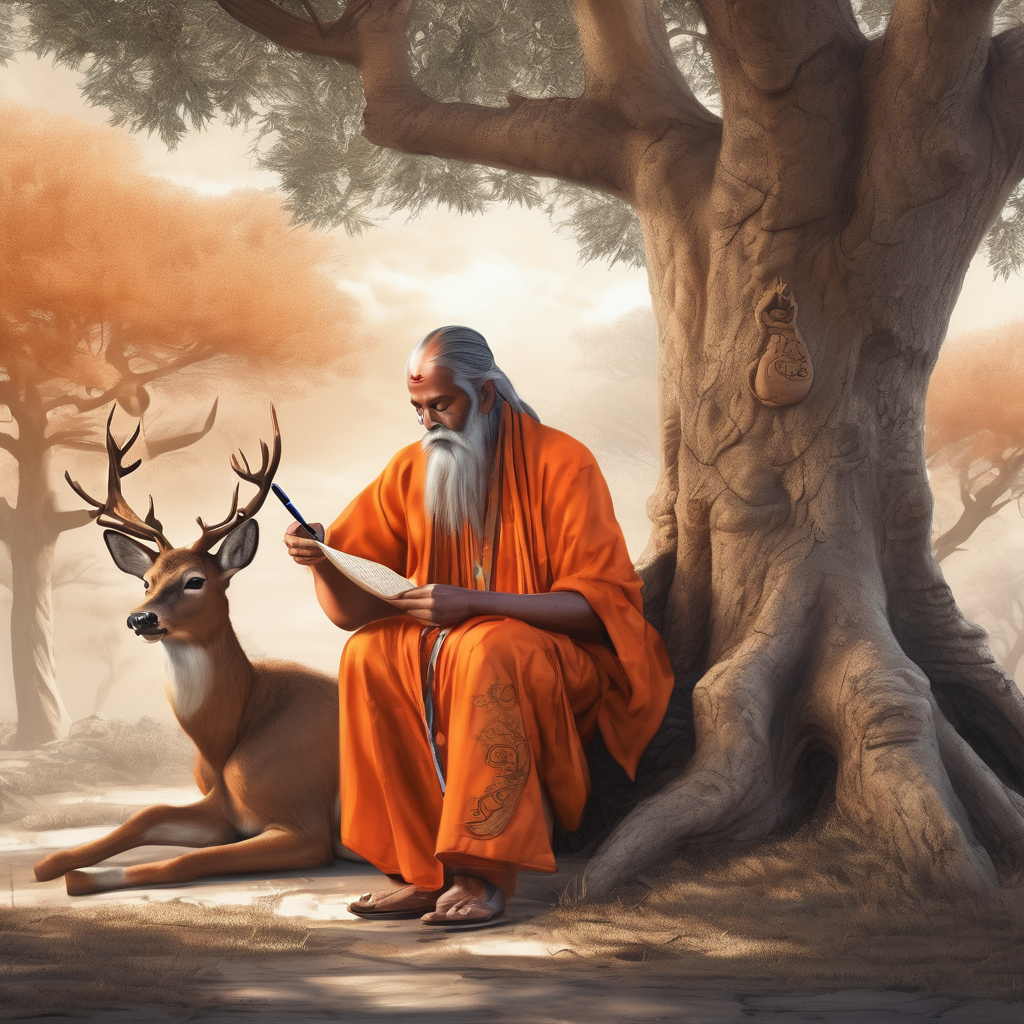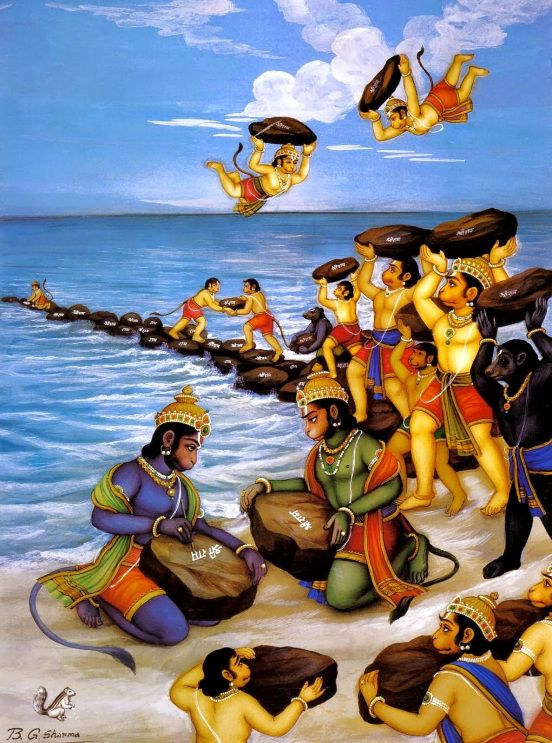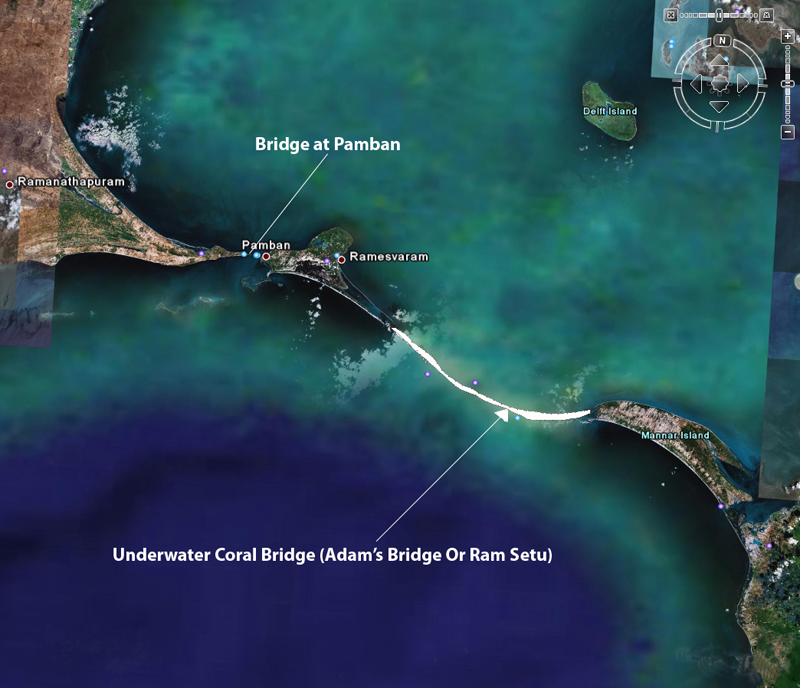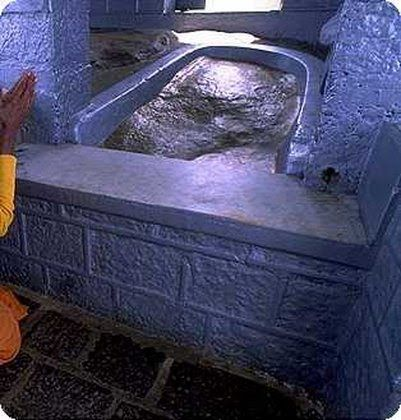The Ramayana by Maharshi Valmiki

The Ramayana is one of the two great ancient Indian epics, along with the Mahabharata. It is traditionally attributed to the Hindu sage Valmiki and is considered one of the foundational texts of Hinduism.
The Ramayana tells the story of Rama, the rightful prince of Ayodhya, who is exiled to the forest for 14 years by his stepmother. While in exile, Rama's wife Sita is kidnapped by the demon king Ravana. Rama, with the help of the monkey god Hanuman and his army, rescues Sita and defeats Ravana.
The epic is rich in moral and spiritual lessons, exploring themes of dharma (righteous duty), loyalty, the ideal king, and the triumph of good over evil. It is revered for its vivid depiction of the ideal human being in the form of Rama, who is considered an avatar (incarnation) of the god Vishnu.

The beings who assist Rama in his quest to rescue Sita are referred to as the "Vanaras" in the original Sanskrit text of the Ramayana. The term "Vanara" translates to "forest people" or "forest dwellers," not "monkey people."
The Vanaras are depicted as having some simian-like characteristics, but they are not strictly speaking monkeys. They are rather a mythical race of forest-dwelling beings with human-like intelligence and abilities. The most prominent of these Vanara leaders is Hanuman, who is often portrayed with a monkey-like appearance, but is considered a divine being, not an actual monkey.
Given the antiquity of the Ramayana and the mythical nature of the Vanara characters, it is possible that the original conception of these "forest people" was inspired by or based on early hominid species like Homo erectus.
Homo erectus inhabited parts of Asia, including the Indian subcontinent, during the Pleistocene era, which predates the traditionally accepted timeframe for the Ramayana by thousands of years. These early hominids would have been hunter-gatherers living in forested environments, similar to how the Vanaras are depicted in the epic.
Some scholars have speculated that ancient Hindu texts and legends may preserve folk memories or oral traditions regarding earlier human species and their interactions with anatomically modern humans. The Vanaras' mixture of human and simian-like traits could be a mythological representation of this interaction and coexistence.

The Rama Bridge, or Sethusamudram, is a chain of limestone shoals situated between the southern tip of India and the island of Sri Lanka. This geographic feature has long been associated with the Ramayana epic, as it is believed to be the bridge that Rama and his army constructed to reach Lanka and rescue Sita from the demon king Ravana.
Recent scientific investigations have indeed suggested that the Rama Bridge may not be a completely natural formation, but rather a partially human-made structure. Some key points regarding this:
Satellite imagery and underwater surveys have revealed the presence of parallel human-made stone alignments beneath the shallow waters, indicating the possible remnants of an ancient man-made causeway.
Radiocarbon dating of the limestone materials suggests that the structure may have been built several thousand years ago, potentially corresponding to the traditional timeline of the Ramayana.
The bridge's unique geomorphological features, such as its linear configuration and the presence of carved rock components, further support the hypothesis of human engineering.
If these findings are corroborated, it would lend credence to the idea that the Rama Bridge may have been a real, physical structure built by ancient inhabitants of the region, rather than just a mythological feature of the Ramayana.

The mountain's Sanskrit name, Sri Pada, translates to "the sacred footprint,"
According to Hindu and Buddhist traditions, the large footprint-shaped impression found at the summit of Adam's Peak is said to be the sacred footprint of Lord Shiva, the Buddha, or Adam (depending on the religious tradition). In the Ramayana, this footprint is sometimes attributed to Rama himself.
The significance of Adam's Peak in the Ramayana narrative is that it is believed to be the location where Hanuman, the monkey-god devotee of Rama, leaped across the ocean from India to Lanka in his quest to rescue Sita.
Many scholars believe the Ramayana likely dates back to sometime between the 5th and 2nd centuries BCE, though some estimates place it as early as the 7th or 8th century BCE.
The Ramayana epic contains several references to astronomical events and celestial phenomena that have been the subject of analysis by scholars attempting to date the composition of the text. The text mentions specific solar and lunar eclipses occurring during the events described, which could potentially be cross-referenced with historical eclipse records. The epic makes references to the positions and movements of various planets, such as Jupiter, Mars, and Saturn. The Ramayana describes the visibility of certain constellations and stars, such as the Pleiades cluster and the pole star.
The Ramayana epic demonstrates a clear understanding and integration of astronomical knowledge by its original authors or compilers. This suggests that the composition of the Ramayana involved people who were well-versed in the scientific observations and concepts of their time.
Comments
Post a Comment